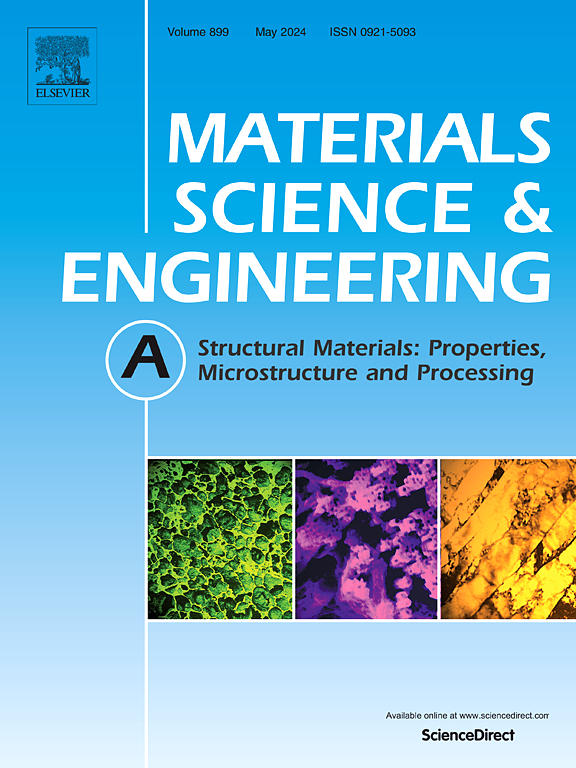Strengthening effect in aluminum-graphene nanolayered composites via interface engineering
IF 6.1
2区 材料科学
Q1 MATERIALS SCIENCE, MULTIDISCIPLINARY
引用次数: 0
Abstract
The exceptional stiffness of graphene has driven extensive research on its integration within metal-graphene multilayer (ML) composites to enhance mechanical properties. This study investigates the influence of interfacial characteristics on the mechanical performance of Aluminum-graphene (Al-Gr) ML composites, employing either amorphous Al2O3 or crystalline Ag as interlayers. Al-Al2O3-Gr ML exhibited limited strengthening, with transmission electron microscopy (TEM) analysis revealing that dislocations were predominantly impeded at the Al2O3 interface rather than the graphene interface, suggesting a negligible strengthening of graphene comparable to Al-Al2O3 ML. In contrast, Al-Ag-Gr ML with an epitaxial Al-Ag interface transmitting dislocations to the graphene displayed a substantial increase in strength, surpassing the strength of Al-Ag ML by more than 30 %. To further investigate these contrasting behaviors, molecular dynamics (MD) simulations were conducted, revealing that the strengthening contribution of graphene depends heavily on the deformation behavior of the Al2O3 layer. At small strains, where shear banding was absent in the Al2O3 layer, graphene provided negligible reinforcement. However, at larger strains, when shear banding initiated, graphene effectively restricted further plastic deformation, markedly enhancing strength. These findings highlight the crucial role of interfacial structure and associated deformation mechanism in governing the mechanical behavior of metal-graphene ML composites.
界面工程研究铝-石墨烯纳米复合材料的强化效应
石墨烯优异的刚度推动了其与金属-石墨烯多层(ML)复合材料集成以提高机械性能的广泛研究。本研究研究了界面特性对铝-石墨烯(Al-Gr) ML复合材料力学性能的影响,采用非晶Al2O3或结晶Ag作为中间层。Al-Al2O3- gr ML表现出有限的强化,透射电子显微镜(TEM)分析显示,位错主要在Al2O3界面而不是石墨烯界面受阻,这表明石墨烯的强化与Al-Al2O3 ML相比微不足道。相比之下,具有外延Al-Ag界面的Al-Ag- gr ML将位错传输到石墨烯,其强度大幅增加,超过Al-Ag ML的强度30%以上。为了进一步研究这些对比行为,进行了分子动力学(MD)模拟,揭示了石墨烯的强化作用在很大程度上取决于Al2O3层的变形行为。在小应变下,Al2O3层中不存在剪切带,石墨烯的增强作用可以忽略不计。然而,在较大的应变下,当剪切带化开始时,石墨烯有效地限制了进一步的塑性变形,显著提高了强度。这些发现强调了界面结构和相关变形机制在控制金属-石墨烯ML复合材料力学行为中的关键作用。
本文章由计算机程序翻译,如有差异,请以英文原文为准。
求助全文
约1分钟内获得全文
求助全文
来源期刊

Materials Science and Engineering: A
工程技术-材料科学:综合
CiteScore
11.50
自引率
15.60%
发文量
1811
审稿时长
31 days
期刊介绍:
Materials Science and Engineering A provides an international medium for the publication of theoretical and experimental studies related to the load-bearing capacity of materials as influenced by their basic properties, processing history, microstructure and operating environment. Appropriate submissions to Materials Science and Engineering A should include scientific and/or engineering factors which affect the microstructure - strength relationships of materials and report the changes to mechanical behavior.
 求助内容:
求助内容: 应助结果提醒方式:
应助结果提醒方式:


